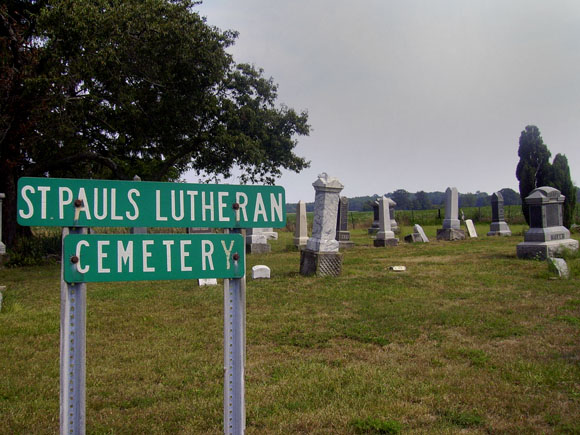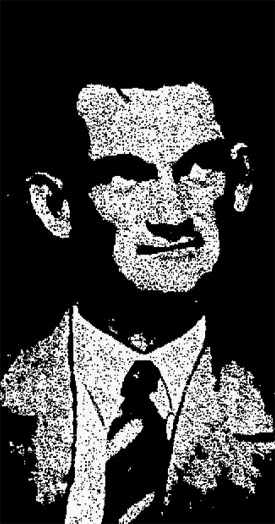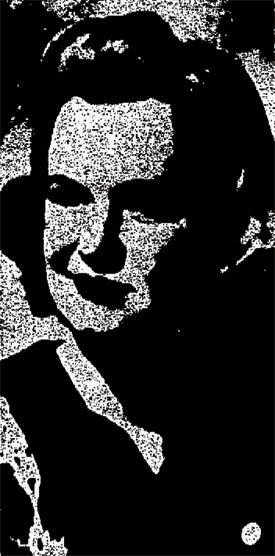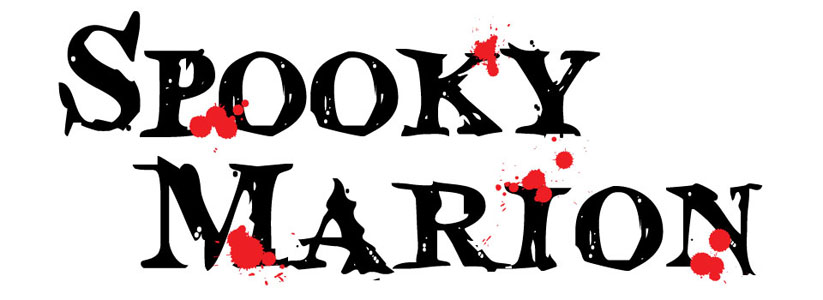
Anyone traveling south on Route 98 will eventually pass an old cemetery located just beyond Firstenberger Road. St. Paul’s Lutheran Cemetery was once connected to St Paul’s Lutheran Church, but the church itself has since been torn down.
The small cemetery is unremarkable enough, but in the summer of 1947 it was the scene of one of Marion’s more shocking murders – a murder that eventually led to one of the area’s largest-ever manhunts.

According to the July 11th, 1947, edition of the Marion Star , the story began when two brothers, Charles and Harry Yeager, were on their way home from their second shift factory jobs. As they turned east off of route 98 onto Firstenberger Road, their headlights “revealed a man who attempted to hide behind a machine parked in the church driveway.” Suspicious, the two brothers pulled into the churchyard where their lights illuminated not only the man but also the partially nude body of a woman lying in the gravel next to the man’s car. The man walked up to the Yeager’s vehicle and said an odd thing: ”There’s my license number. What are you going to do about it?” The brothers, unsure of what to make of the situation, duly wrote the man’s license plate number down before leaving to go place a call to the sheriff.
When the Yeager boys and Marion County Sheriff Leroy Retterer returned to the churchyard, the man, unsurprisingly, was gone. But the body of the woman, later identified as Zora Gerbes, remained. Zora was stone dead and apparently the man the Yeager boys had just spoken to had strangled her. However, the man’s identity wouldn’t remain a mystery for long; the license plate number was soon traced to Marion man Edwin Young, and Marion County Prosecuting Attorney James Reed filed a warrant for Young’s arrest the next day.
That a murder had occurred in Marion must have been big news. But the backgrounds of the two people involved made the story even more salacious. Zora was a divorced, unemployed mother of three who, according to the July 12th edition of the Star, “frequented beer parlors regularly.” Furthermore, according to the July 14th edition of the Star, at the funeral home and under better light, “both the Sheriff and police officers knew her by sight from her previous appearances in court.” For his part, Edwin Young was an ex-con with a wheelchair-bound wife as well as a four year old son. The Youngs had recently moved to Marion from New Philadelphia. He was employed as a truck driver and his wife admitted to police that, like Gerbes, “her husband spent a good deal of time in beer parlors.”
The details of the murder itself could only have provided more grist for the local rumor mill. At the time of her death, Gerbes was naked from the waist down and bound with a clothes-line.

Law enforcement officials continued looking for Young, and they extended the manhunt into Pennsylvania, New York and Kentucky. Meanwhile, according to the Star, on July 14th, 1947, between 800 to 1000 people – many of them “curiosity seekers” – visited Gerbes’ stepmother’s house on Lee Street to view the body. Gerbes was laid to rest at the Forest Glen Memorial Park (now Chapel Heights Cemetery). Meanwhile, Mrs. Young and her son left Marion to return to New Philadelphia. In the July 14th, 1947, edition of the Marion Star, Herman Walton, Mrs. Young’s father, hinted that he felt his daughter and grandson were no longer safe in Marion.
Young proved to be a difficult man to find. Summer turned into fall and Young was still somewhere on the loose. Marion law enforcement continued to work on the case, but it was going cold. Sheriff Retterer continued to follow up leads and send out circulars with Young’s face plastered on them. As it happened, one of these circulars ended up on the desk of John Hodson, sheriff of Prowers County, Colorado. At that time, Hodson had a ‘Roy E. Edwards’ in custody for writing bad checks, and ‘Roy E. Edwards’ looked an awful lot like the man on the circular. In an interview with the Star on January 14th, 1948, Sheriff Hodson explained, “I almost fell off my chair when I saw the picture. I never saw a better picture of a man. I knew we had him although the name was different.”
Sheriff Retterer, extradition papers in hand, eventually went to Colorado to collect Young and bring him back to Ohio to stand trial. On January 16th, 1948, Young confessed to murdering Zora Gerbes. Young claimed that he had had an ongoing relationship with Gerbes and that on the night she died, they had been drinking together in bars in both Marion and Delaware. Young claimed Gerbes had told him she had a venereal disease and this was his motive for murdering her. In the February 26th, 1948, edition of the Marion Star, Young said during his confession that, “She told me she was burnt up and I would be too pretty soon. I decided to kill her, so I strangled her.” Interestingly, a subsequent examination of Gerbes’ body by the county coroner showed no signs of venereal disease.
In addition to confessing to murdering Zora Gerbes, Young also detailed his prior relationship with Gerbes, which, according to Young, had been going on for more than two years. In the January 17th, 1948, edition of the Marion Star, Young asserts he had met Gerbes in early 1945 in New Philadelphia. He was working as a coal truck driver and made frequent trips between New Philadelphia and Marion. Thus, he was able to maintain a relationship with Gerbes despite their distance from each other. Eventually, he moved his wife and son to Marion, though whether Gerbes was the reason is unclear.
With eyewitness testimony placing Young at the murder scene as well as transcripts of Young’s confession in Colorado, the jury deliberated for only two hours and ten minutes before finding him guilty of first-degree murder. On March 3rd, 1948, Marion County Common Pleas Judge Paul Smith sentenced Edwin Young to life in prison.

What a story! Charles and Harry Yeager are/were my mothers’ cousins!!! Of course, never heard of this as it happened a few months before I was born. It was old news, forgotten later as I grew up.
My dad used to have a shop downtown called Rich’s Fishing and Hunting Supplies, and I believe Charlie was one of his customers. He’s the one who told my dad this story. My dad later told me the story, and I decided to dig up the original newspaper articles about the murder.
I was given a (deceased) friend’s sewing box and in it was a thimble with “Retterer for Sheriff” on it. I wasn’t familiar with the name so put it in a Google search. This story was one of the hits and through it I now know he was elected and have a hint of the time frame of when he served. I also was introduced to this interesting story in the process. BTW Rich was a one street over neighbor of ours so I expect you were too.
We lived on the corner of Silver and Rose? Can I ask you your last name? Glad you liked the story!
-Josh Simpkins